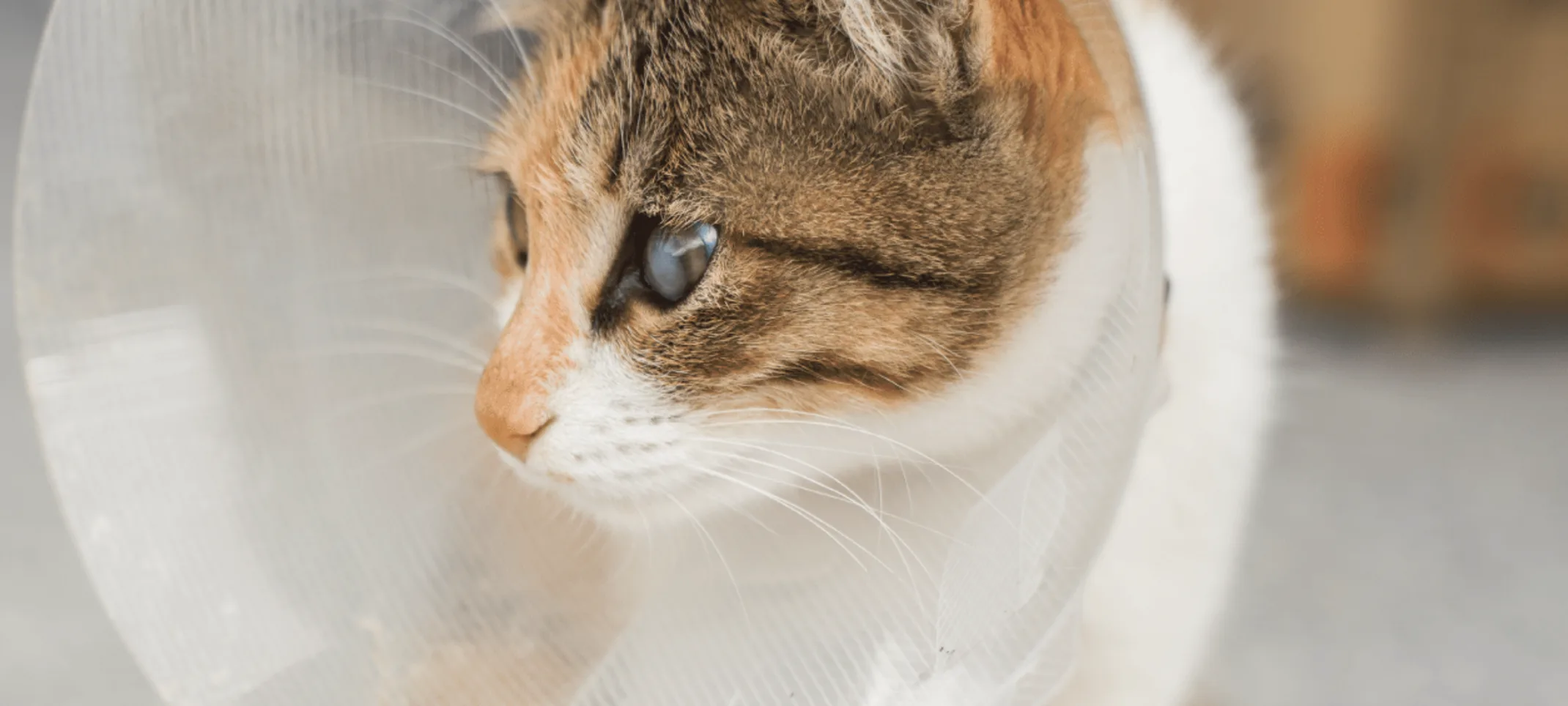Sunset Strip Veterinary Clinic
Spay & Neuter
Spaying (female) or neutering (male) your pet can help them live a longer, healthier life by minimizing behavioural problems and helping control the population of dogs and cats.

When should I have my pet spayed or neutered?
This varies based on species, gender, and breed. Please contact us to learn more.
Why should I have my pet spayed or neutered?
Many benefits come with spaying your female companion animal. They include helping to control the stray dog and cat population, eliminating heat cycles that attract male dogs, and preventing diseases in your pet such as pyometra (infection in the uterus) and mammary cancer. Additionally, research has shown that spayed pets live longer than pets that have not been spayed.
Many benefits come with castrating your male companion animal. These benefits include helping to control the stray dog and cat population, eliminating undesirable and embarrassing behaviour, and preventing diseases in your pet such as prostate disease and testicular cancer.
How is a spay or neutering surgery performed?
Spaying, also called an "ovariohysterectomy," is a surgical procedure in which both ovaries and uterus are completely removed from your female pet while they are under general anesthesia. Castrating refers to the surgical procedure in which both testicles are removed while your male pet is under general anesthesia.
Before the operation, we will assess your pet to minimize risk. While your pet is under anesthesia we take individual care for the safety of each pet. Our registered veterinary technicians and doctors are trained in advanced monitoring to ensure your pet's comfort.
Your pet’s safety and comfort are our primary concerns when performing a spay or castration. We routinely use an IV catheter and fluids on canine spays and castrations, as well as feline spays. This is important for maintaining blood pressure and perfusion to the kidneys and other organs as well as allowing immediate IV access in the event of an emergency. We use advanced pain management techniques in conjunction with anesthesia to make sure your pet is as comfortable as possible during the procedure and after they are discharged. Our spay and castration patients receive various pain medications during the procedure and usually go home with oral pain medication. We also perform local anesthetic blocks at the surgical site. Proper pain management makes the procedure as comfortable as possible and allows for faster recovery.
What to Expect: Surgery & In-Patient Procedures
Surgeries are scheduled Monday to Friday of each week.
At the Sunset Strip Veterinary Clinic, all patients are carefully examined before surgery to ensure a high level of safety. Pre-anesthetic blood screens are always available to ensure added confidence. The anesthetic regime we use is tailored to the surgical procedure being performed and to your pet’s specific health requirements. This focus on an individualized anesthesia and pain management protocol helps to comfort your pet during their visit and reduce the risk of adverse effects with anesthesia. Our commitment to minimizing the discomfort associated with surgical procedures using a multi-modal approach helps your pet remain happy, healthy, and ready to return to their normal lifestyle as soon as possible.
On admission to the hospital, your pet will be paired with a registered veterinary technician, who will monitor and optimize the health and comfort of your pet throughout their stay. This dedicated technician will then provide you with all the details and information you need about their stay and how best to care for them at home after surgery.
Our surgical facility also includes:
Electronic monitoring equipment to assess blood pressure and heart rate during surgery.
Intravenous fluid therapy for virtually all procedures
Heated surgical tables for greater comfort and faster, healthier surgical recovery
Separate, heated recovery rooms for dogs and cats
Specialized equipment for dental, soft tissue, and ophthalmic procedures.
